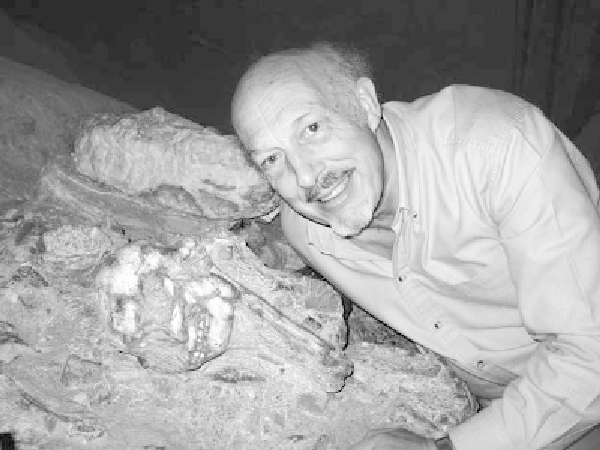Biology Reference
In-Depth Information
Figure 28. Ron Clarke deep in the cave at Sterkfontein with part of the aus-
tralopithecine skeleton he discovered, which is known as Little Foot. Photo-
graph by Dean Falk.
other words, evolutionary changes in the heel preceded those in the big
toe. For its part, Little Foot's hand does not reveal features associated
with apelike knuckle-walking. Similar to apes' (and the Dikika baby's),
however, the hand had curved finger bones, which were probably used
for climbing in trees. Like the Dikika baby, living at the same time to
the north, Little Foot was bipedal but not to the extent that humans are.
This suggests that
Australopithecus
was probably as comfortable climbing
in trees as walking on the ground.
33
Two partial skeletons from the South African site of Malapa were
mens (MH1 and MH2 in figure 27) have been assigned to a new austral-
opithecine species
(Australopithecus sediba)
and are especially exciting
because of their surprisingly recent date of about 1.9 million years and

